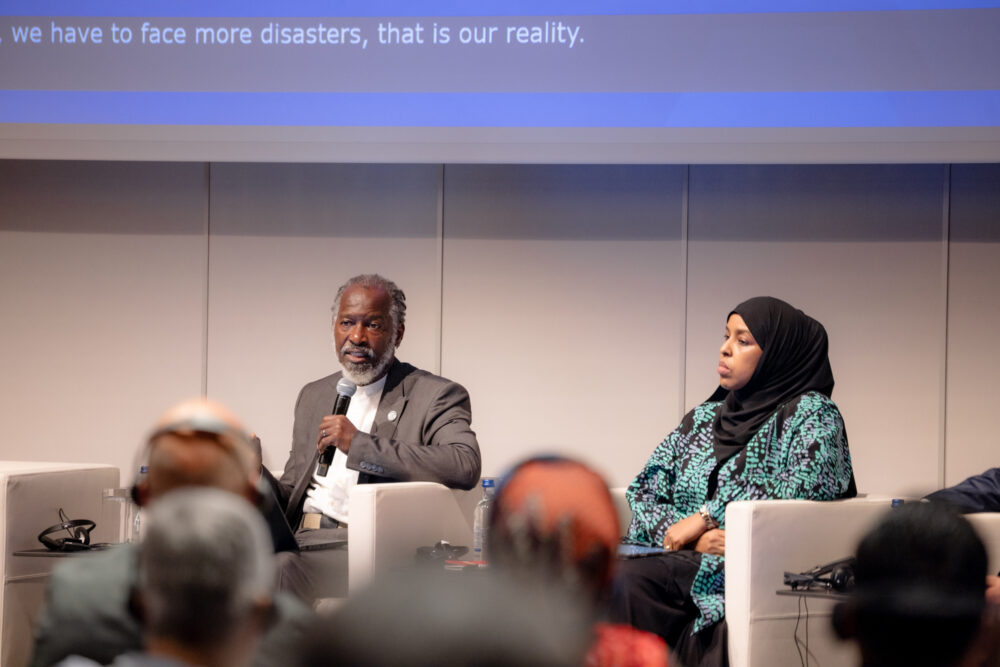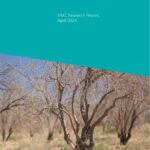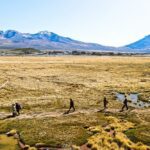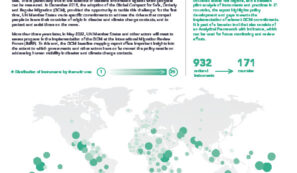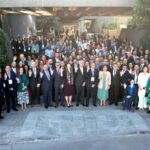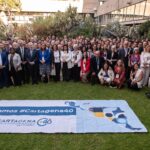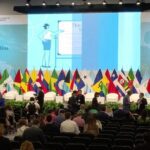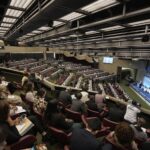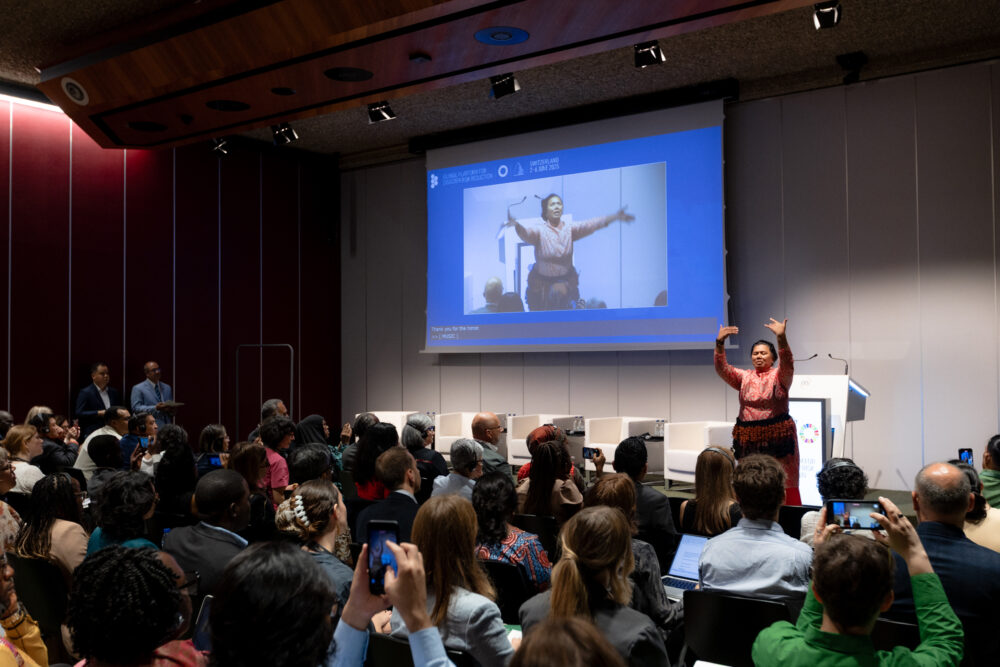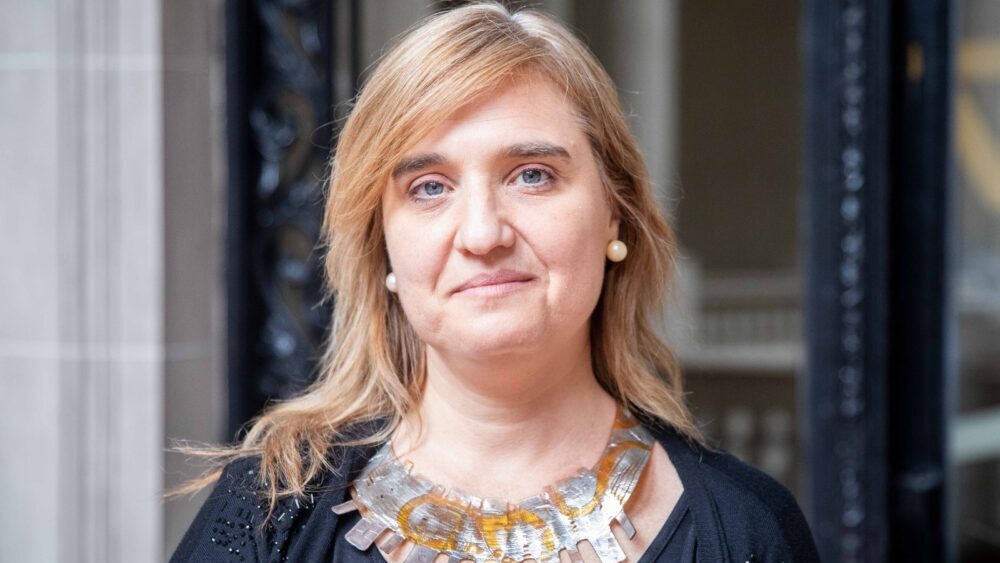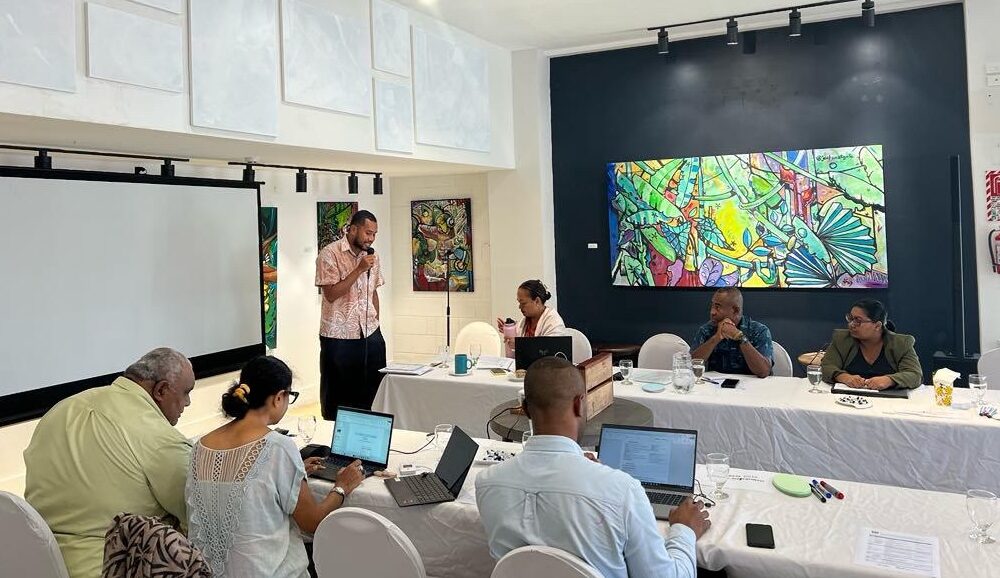“No one can protect us but us. Awareness, organization, and advocacy are our best tools to safeguard our lands and our people.”
At the 2025 Global Platform for Disaster Risk Reduction (GP25) held in Geneva from 4–6 June 2025, the Thematic Session Catalyzing Governance Solutions for Disaster and Climate-Related Displacement featured Barbudan activist John Mussington who contextualized the disaster displacement faced by his community. He shared his experience founding the community network Stronger Caribbean Together, created by those displaced by “disaster capitalism” as storm-damaged sites were cleared for tourism development.
In a follow-up exchange with the Platform on Disaster Displacement (PDD), he reflected on his experience of being displaced from Barbuda after Hurricane Irma, the role of communal land ownership and local shelters, and the importance of affected persons having a voice in recovery to protect their homes and resist exploitation.
PDD Secretariat: Could you share your personal experience of displacement in Barbuda after Hurricane Irma, and how it has shaped your perspective today?
John Mussington: Disaster displacement has shaped my life, just as it has for many other communities around the world. My own story began in 2017 when Barbuda was the first landmass struck by Hurricane Irma. With sustained winds of 185 miles per hour, it was the strongest Atlantic storm ever recorded at that time. The destruction was catastrophic, although fortunately casualties were limited to only one life lost. I believe that was because our wetlands were still intact and because we had been building stronger homes ever since a string of hurricanes in the 1990s. A key reason we were able to do that is because land in Barbuda is owned communally. The land belongs to all of us, which means families can put their money into building strong, cinderblock homes instead of paying off bank loans. If a storm like Irma had struck our sister island of Antigua, the loss of life would likely have been far greater.
For us, however, the greater disaster came after the hurricane. A state of emergency was declared, followed by a mandatory evacuation because another storm was said to be on its way. Most people were reluctant to leave, but more than 99 percent of the population were removed from the island. When we arrived in Antigua, we expected to return home in a day or two. Many of us left food out for our pets and planned to come back quickly to start repairs. But as the weeks went by, we began to realize we were not meant to go back. Decisions about Barbuda’s future were being made without our involvement. These included developing projects for tourism on land that was impacted by the storm. We felt like children sitting in the corner, listening to others decide our fate without asking for our consent.
As a teacher, I saw the impact on children almost immediately. They were scattered across Antigua’s schools instead of being kept together with their classmates. Many could not cope with the stress and change. Parents told me their children simply could not handle it. Some families returned to Barbuda because the emotional toll was too heavy. Meanwhile, our property and livelihoods suffered immensely. Boats, engines, and other gears were left unattended for weeks and could no longer be salvaged. When we were finally allowed back, it was only for two hours at a time, under the watch of armed military personnel. It felt like entering an occupied territory.
This experience taught me that although displacement may be sometimes necessary during an emergency, it should be temporary unless the community itself agrees to a permanent move. In our case, it felt as though the intention was to make it permanent without consulting us. We had to fight, against all odds, to return and reclaim our homes.
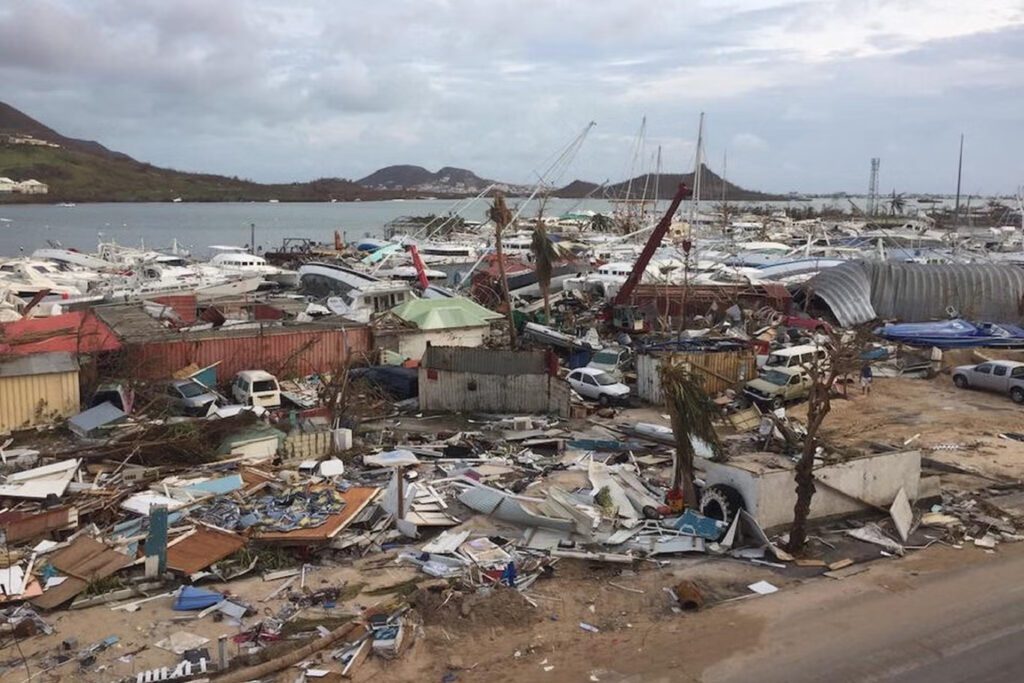
PDD Secretariat: Looking back, if the best possible solutions had been in place, how would you have wanted this experience to unfold?
John Mussington: First and foremost, managing a situation like this must involve the community’s input and our decisions about what we need. If I know I am living in an area where I do not need to move, then I should be given that option – to stay! Others who may be more vulnerable should be able to relocate, and that is why we have shelters. In Barbuda, we have certain buildings designed to withstand storms, and we ensure regularly that these shelters are secure, well-managed, and equipped so that people who need to move can do so when necessary.
The problem is that after 2017, there is now deep mistrust within the community members. If there were ever a genuine need for evacuation, for instance, for a storm stronger than anything we have seen, many Barbudans would resist leaving. This is because our forced displacement after Hurricane Irma felt like it had less to do with safety and more to do with opening the island for private luxury development and real estate. That fight is still ongoing, so the fear of being removed permanently is still fresh in people’s minds. To solve this, our focus should be on managing shelters properly. We already have at least three structures built to withstand even the strongest storms, and they can be used to keep people safe without removing them from the island. Last year, for example, people were willing to move to shelters, but they were not willing to be taken off the island.
Now, if the risk was truly to the entire island, something so extreme that even the strongest shelters could not protect us, we would face a much harder choice. Barbuda is only 25 miles from Antigua, so in most scenarios, if a massive storm hits us, it is likely to hit Antigua as well. That raises the question: where is the safer place to ride out the storm? Is it better to stay in a place I know, where I understand the limits of my shelter, or to be moved across the water into uncertainty?
My family and I were reluctant to get evacuated in 2017, because our house was intact, we had food supplies for months, and we knew our surroundings. What we did not know was what would happen if we were put on an open barge, crossing rough waters to Antigua, without a proper reception plan once we arrived. In fact, some evacuees were taken across on barges designed for transporting sand, which posed its own dangers. If people are to be moved in the future, it must take place in a dignified manner: the place they are going to must be well-managed, secure, and safer than where they are leaving. Otherwise, you risk compounding the danger. Without careful planning and guarantees, the evacuation of people can become a bigger threat than the storm itself.
PDD Secretariat: Drawing on Barbuda’s experience, how can communities plan for displacement before disasters occur, so that recovery is swift, impacts are minimized, and the needs and rights of displaced people remain at the center of recovery and reconstruction efforts?
John Mussington: Every year, we put a disaster plan in place, since the hurricane season runs from June 1 to November 30. Leading up to the season, we meet with different stakeholders to prepare. When displacement becomes a possibility, it doesn’t always mean moving people across the water 25 miles. Often, it can be from a vulnerable area in Barbuda to a more secure location on the island. Our plan already accounts for that. We have at least three designated shelters, complete with managers, supplies, and clear procedures. There’s a scaled warning system: a hurricane watch, then a hurricane warning, and when it reaches that stage, we know who the most vulnerable are the sick, the elderly, those living alone, and we mobilize to move them to safety.
One important lesson from 2017 is the need for displaced persons and their organizations to have a voice during recovery and reconstruction. After the hurricane, narratives circulated that didn’t reflect reality, saying Barbuda was uninhabitable and 95 percent destroyed. In truth, that was far from accurate. We started a Facebook page, Barbuda Silent No More, to provide our perspective, share facts, and ensure that our community’s needs were visible. That gave us a seat at the table, a voice we had been denied while others made decisions about our future. Through that, we connected with other Caribbean communities who had faced similar experiences, forming a network called Stronger Caribbean Together. We shared stories which garnered international attention, supported each other, and raised awareness about ‘disaster capitalism’ in Barbuda and other parts of Latin America and the Caribbean.
Displacement compounds the initial effects of a disaster when local communities are not included in recovery planning. Those affected are best positioned to organize resources and rebuild efficiently. External actors cannot replace local knowledge. One positive example came from the Red Cross: instead of giving prepackaged relief items, they issued credit cards so households could prioritize their own needs, whether it was food, nails, or lumber. Allowing people to participate in the recovery process is essential. Recovery is also a form of therapy, particularly for children. Being involved in restoring their homes and communities helps address the trauma of displacement. When children were evacuated to Antigua, one of the hardest impacts was the unfamiliar environment. Being able to return and actively participate in rebuilding provided psychological relief to them.
PDD Secretariat: Do you see this risk as unique to this region, and what are ways to organize communities to take ownership?
John Mussington: This is not unique to the Caribbean. I’ve heard this happening in places like Scotland and California, and strangely enough, it follows the same pattern. Companies are going around the world acquiring land and building enclaves for millionaires, fully aware that disasters, whether hurricanes, fires, or even financial crashes create opportunities to displace communities. That is just the reality we face. Our network, Stronger Caribbean Together, has grown significantly. We’ve even produced a manifesto that addresses all the issues we’ve discussed today. The goal is to build awareness because knowledge empowers people to adapt, strengthen their resilience, and protect their communities.
In terms of tools and advocacy channels, we started with a Facebook page, and now we use multiple platforms and methods. Technology has been crucial: Zoom allows us to hold monthly meetings, we host webinars on a range of topics: law, resources, disaster preparedness, and citizens’ rights in planning and development. These webinars also provide a space for communities to share their experiences. Often, communities don’t realize that what they are going through is a common pattern elsewhere. Once you see the pattern, you gain both understanding and strength to act.
Our network also connects communities with resources and expertise. For example, in Grenada, when communities need to challenge government actions, they have access to legal professionals with the expertise and funding to mount those challenges. This is critical because corporations and moneyed interests often exploit disasters. Even when physical planning laws and development controls exist, these are sometimes not enforced. What happened in Barbuda in 2017 mirrors what happened in Grenada: laws designed to protect the environment were broken in the aftermath of a disaster, leaving communities more vulnerable.
In Barbuda today, for example, we are more exposed to this than in 2017. We’ve lost a significant portion of our wetlands and beaches, which had previously served as natural storm protection. The impact of any future storm will likely be far worse. Empowering communities to challenge authorities and protect the environment is essential. Many Caribbean nations have signed the Escazú Agreement, which guarantees ordinary people the right to justice, climate justice, and to be informed about environmental decisions affecting them. It also ensures the right to participate in decision-making and mount legal challenges. These protections are rooted in international frameworks like the Millennium Development Goals, giving teeth to citizens’ rights. Ultimately, communities must empower themselves. No one can protect us but us. Awareness, organization, and advocacy are our best tools to safeguard our lands and our people.
Header Photo: FG for UNDRR

